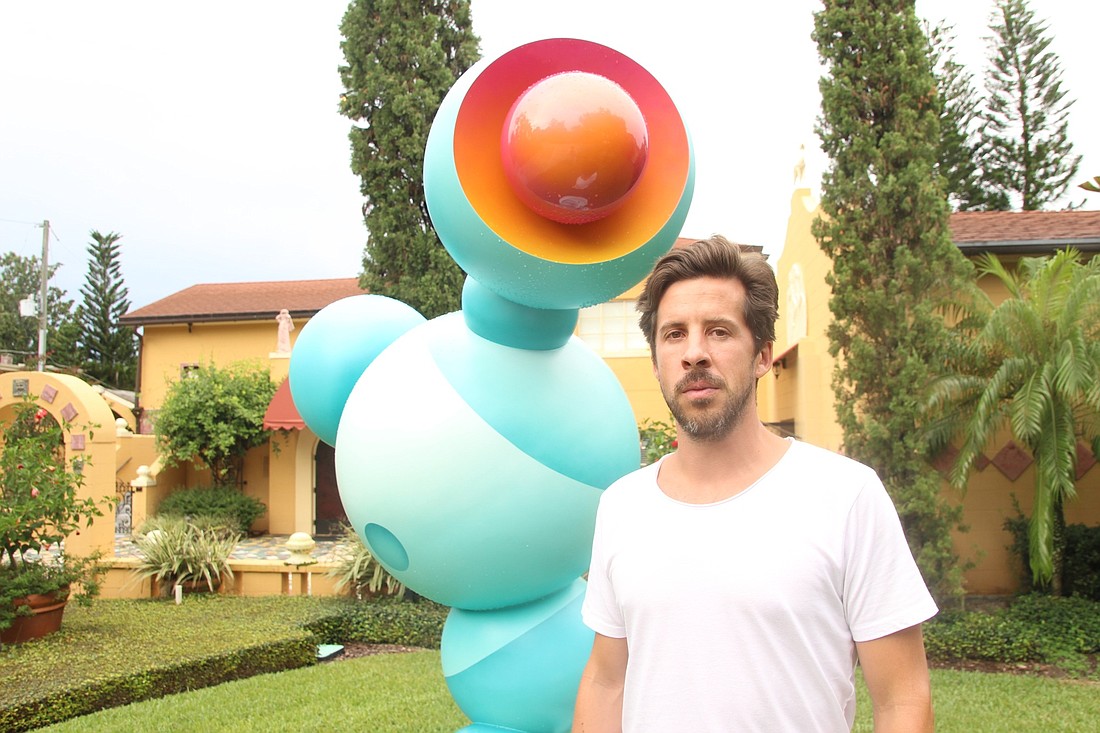- March 13, 2025
-
-
Loading

Loading

Much like the world itself, art culture has changed over the last 100 years. A century ago, the nation of Czechoslovakia was founded following World War 1. In 1901, Czech woodcarver Albin Polasek immigrated to the United States and discovered a talent for sculpting.
He quickly received national renown before retiring to Winter Park in 1950 and, in 1961, establishing the Albin Polasek Foundation and Museum. Seventeen years later, Czech citizen Jan Kaláb was born and also discovered a talent for creating sculptures.
On Aug. 28, Kaláb’s work made its way to Winter Park as the Polasek’s Musem’s featured exhibit — “The Soul of Graffiti.”
SPIRIT OF DARKNESS
All of this history and timing is no coincidence for museum curator Rachel Frisby — finding a way to capture the shifting Czechoslovakian art culture throughout the years has been on her mind.
Frisby, with the help a friend at the Czech embassy in Washington, D.C., put together a list of prominent and up-and-coming Czech artists that could be showcased at the Polasek. She ultimately decided on Kaláb earlier this year because of his journey from a young graffiti artist to his international 3-D sculpture work.
“It was his background, his personal evolution as an artist,” Frisby said. “To me, it mirrors the country of Czechoslovakia and, through its independence, its new shape and cultural direction. I think Jan’s artistic career has also mirrored that.”
The 40-year-old artist from eastern Prague discovered his love of graffiti art when he was just 15 and quickly became known across Europe for his work under the pseudonym “Cakes” — when he wasn’t getting caught by the police, that is.
“Graffiti was something unknown,” Kaláb said. “I was amazed by all the colors and the spirit of darkness, it was great for a kid (at 15). … Sometimes you go out, paint somewhere and are chased. Sometimes you escape; sometime you’re caught. You go to prison for one night but no serious troubles.”
Eventually, Kaláb transitioned from spraying 2-D graffiti art on the streets — he said there was only so much he wanted to do with graffiti — to attending a fine-arts academy in Prague and creating 3-D abstract sculptures in a studio. It was that style of work that has been put on display in museums across the globe. In Kaláb’s eyes, the 3-D pieces that can be created and installed onto walls tell the same story as graffiti but in a more accepted way.
CONTRAST
Although Albin Polasek, the museum’s founder, created anatomically-realistic depictions of men and woman, Kaláb instead opts to create eccentric, twisted shapes made of resin or plywood. He flew to Winter Park from Prague to install his work, consisting of both 3-D sculptures and abstract paintings, which will be on display until Dec. 2.
It’s the contrast of those Polasek and Kaláb designs, standing side-by-side in the front of the museum and in the sculpture garden, that Kaláb enjoys.
“To me, I wanted to create a dialogue between my modern sculptures and his traditional ones,” Kaláb said. “When I look to my piece and I see his, I think it’s pretty weird and interesting. His work is very classical and easy to understand. Because of him, I’m here, so I have a great respect.”
IF YOU GO
The Soul of Graffiti — Jan Kaláb
WHEN: Aug. 28 to Dec. 2
WHERE: Albin Polasek Museum & Sculpture Gardens, 633 Osceola Ave., Winter Park
WEBSITE: polasek.org